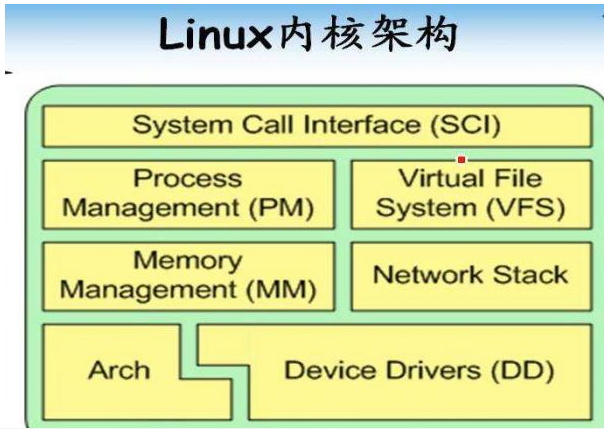

Linux内核驱动的platform机制是怎样的
嵌入式技术
描述
从Linux 2.6起引入了一套新的驱动管理和注册机制:platform_device和platform_driver。Linux中大部分的设备驱动,都可以使用这套机制,设备用platform_device表示,驱动用platform_driver进行注册。
Linux platform driver机制和传统的device driver 机制(通过driver_register函数进行注册)相比,一个十分明显的优势在于platform机制将设备本身的资源注册进内核,由内核统一管理,在驱动程序中使用这些资源时通过platform device提供的标准接口进行申请并使用。这样提高了驱动和资源管理的独立性,并且拥有较好的可移植性和安全性(这些标准接口是安全的)。platform机制的本身使用并不复杂,由两部分组成:platform_device和platfrom_driver。通过platform机制开发底层设备的流程是申请platform_device,注册platform_device,注册platform_driver
platform_device结构体用来描述设备的名称、资源信息等。该结构被定义在include/linux/platform_device.h中,定义原型如下:
struct platform_device {
const char * name; //定义平台设备的名称
int id;
struct device dev;
u32 num_resources;
struct resource * resource; //定义平台设备的资源。
};
下面来看一下platform_device结构体中最重要的一个成员struct resource * resource。struct resource被定义在include/linux/ioport.h中,定义原型如下:
struct resource {
resource_size_t start; //定义资源的起始地址
resource_size_t end; //定义资源的结束地址
const char *name; //定义资源的名称
unsigned long flags; //定义资源的类型,比如MEM,IO,IRQ,DMA类型
struct resource *parent, *sibling, *child; //资源链表指针
};
通过调用函数platform_add_devices()向系统中添加该设备了,该函数内部调用platform_device_register( )进行设备注册。要注意的是,这里的platform_device设备的注册过程必须在相应设备驱动加载之前被调用,即执行platform_driver_register()之前,原因是驱动注册时需要匹配内核中所有已注册的设备名。
接下来来看platform_driver结构体的原型定义,在include/linux/platform_device.h中,代码如下:
struct platform_driver {
int (*probe)(struct platform_device *);
int (*remove)(struct platform_device *);
void (*shutdown)(struct platform_device *);
int (*suspend)(struct platform_device *, pm_message_t state);
int (*suspend_late)(struct platform_device *, pm_message_t state);
int (*resume_early)(struct platform_device *);
int (*resume)(struct platform_device *);
struct device_driver driver;
};
内核提供的platform_driver结构体的注册函数为platform_driver_register(),其原型定义在driver/base/platform.c文件中,具体实现代码如下:
int platform_driver_register(struct platform_driver *drv)
{
drv-》driver.bus = &platform_bus_type;
if (drv-》probe)
drv-》driver.probe = platform_drv_probe;
if (drv-》remove)
drv-》driver.remove = platform_drv_remove;
if (drv-》shutdown)
drv-》driver.shutdown = platform_drv_shutdown;
if (drv-》suspend)
drv-》driver.suspend = platform_drv_suspend;
if (drv-》resume)
drv-》driver.resume = platform_drv_resume;
return driver_register(&drv-》driver);
}
下面举个例子来说明一下:
在kernel/arch/arm/mach-pxa/pxa27x.c定义了
tatic struct resource pxa27x_ohci_resources[] = {
[0] = {
.start = 0x4C000000,
.end = 0x4C00ff6f,
.flags = IORESOURCE_MEM,
},
[1] = {
.start = IRQ_USBH1,
.end = IRQ_USBH1,
.flags = IORESOURCE_IRQ,
},
};
这里定义了两组resource,它描述了一个usb host设备的资源,第1组描述了这个usb host设备所占用的
总线地址范围,IORESOURCE_MEM表示第1组描述的是内存类型的资源信息,第2组描述了这个usb host设备
的中断号,IORESOURCE_IRQ表示第2组描述的是中断资源信息。设备驱动会根据flags来获取相应的资源信息。
有了resource信息,就可以定义platform_device了:
static struct platform_device ohci_device = {
.name = “pxa27x-ohci”,
.id = -1,
.dev = {
.dma_mask = &pxa27x_dmamask,
.coherent_dma_mask = 0xffffffff,
},
.num_resources = ARRAY_SIZE(pxa27x_ohci_resources),
.resource = pxa27x_ohci_resources,
};
有了platform_device就可以调用函数platform_add_devices向系统中添加该设备了,这里的实现是
static int __init pxa27x_init(void)
{
return platform_add_devices(devices, ARRAY_SIZE(devices));
}
这里的pxa27x_init必须在设备驱动加载之前被调用,可以把它放到
subsys_initcall(pxa27x_init);
驱动程序需要实现结构体struct platform_driver,参考kernel/driver/usb/host/ohci-pxa27.c,
static struct platform_driver ohci_hcd_pxa27x_driver = {
.probe = ohci_hcd_pxa27x_drv_probe,
.remove = ohci_hcd_pxa27x_drv_remove,
#ifdef CONFIG_PM
.suspend = ohci_hcd_pxa27x_drv_suspend,
.resume = ohci_hcd_pxa27x_drv_resume,
#endif
.driver = {
.name = “pxa27x-ohci”,
},
};
在驱动初始化函数中调用函数platform_driver_register()注册platform_driver,需要注意的是
ohci_device结构中name元素和ohci_hcd_pxa27x_driver结构中driver.name必须是相同的,这样
在platform_driver_register()注册时会对所有已注册的所有platform_device中的name和当前注
册的platform_driver的driver.name进行比较,只有找到相同的名称的platfomr_device才能注册
成功,当注册成功时会调用platform_driver结构元素probe函数指针,这里就是ohci_hcd_pxa27x_drv_probe。
当进入probe函数后,需要获取设备的资源信息,获取资源的函数有:
struct resource * platform_get_resource(struct platform_device *dev, unsigned int type, unsigned int num);
根据参数type所指定类型,例如IORESOURCE_MEM,来获取指定的资源。
struct int platform_get_irq(struct platform_device *dev, unsigned int num);
获取资源中的中断号。
struct resource * platform_get_resource_byname(struct platform_device *dev, unsigned int type, char *name);
根据参数name所指定的名称,来获取指定的资源。
int platform_get_irq_byname(struct platform_device *dev, char *name);
根据参数name所指定的名称,来获取资源中的中断号。

总结,通常情况下只要和内核本身运行依赖性不大的外围设备,相对独立的,拥有各自独自的资源(地址总线和IRQs),都可以用platform_driver实现。如:LCD,网卡、USB、UART等,都可以用platfrom_driver写,而timer,irq等小系统之内的设备则最好不用platfrom_driver机制。
责任编辑:ct
-
详解linux内核的uevent机制2024-09-29 2853
-
linux驱动程序如何加载进内核2024-08-30 1647
-
一文总结linux的platform驱动2023-10-16 2168
-
Linux内核中现存的所有platform_device2023-07-30 1705
-
深入解析Linux下 Platform_device 及Platform_driver2022-02-07 1198
-
Linux内核文件Cache机制2021-08-31 834
-
Linux驱动中的platform总线详解2021-02-26 4651
-
Linux的platform机制开发驱动流程是怎么样的?2019-09-23 1481
-
驱动之路之platform按键驱动2019-05-15 1284
-
深入Linux设备驱动程序内核机制2018-02-24 4656
-
linux内核机制有哪些2017-11-14 5863
-
linux内核rcu机制详解2017-11-13 9304
-
怎样去读Linux内核源代码2017-10-25 848
-
关于linux内核的platform_get_resource函数2015-02-17 2593
全部0条评论

快来发表一下你的评论吧 !

